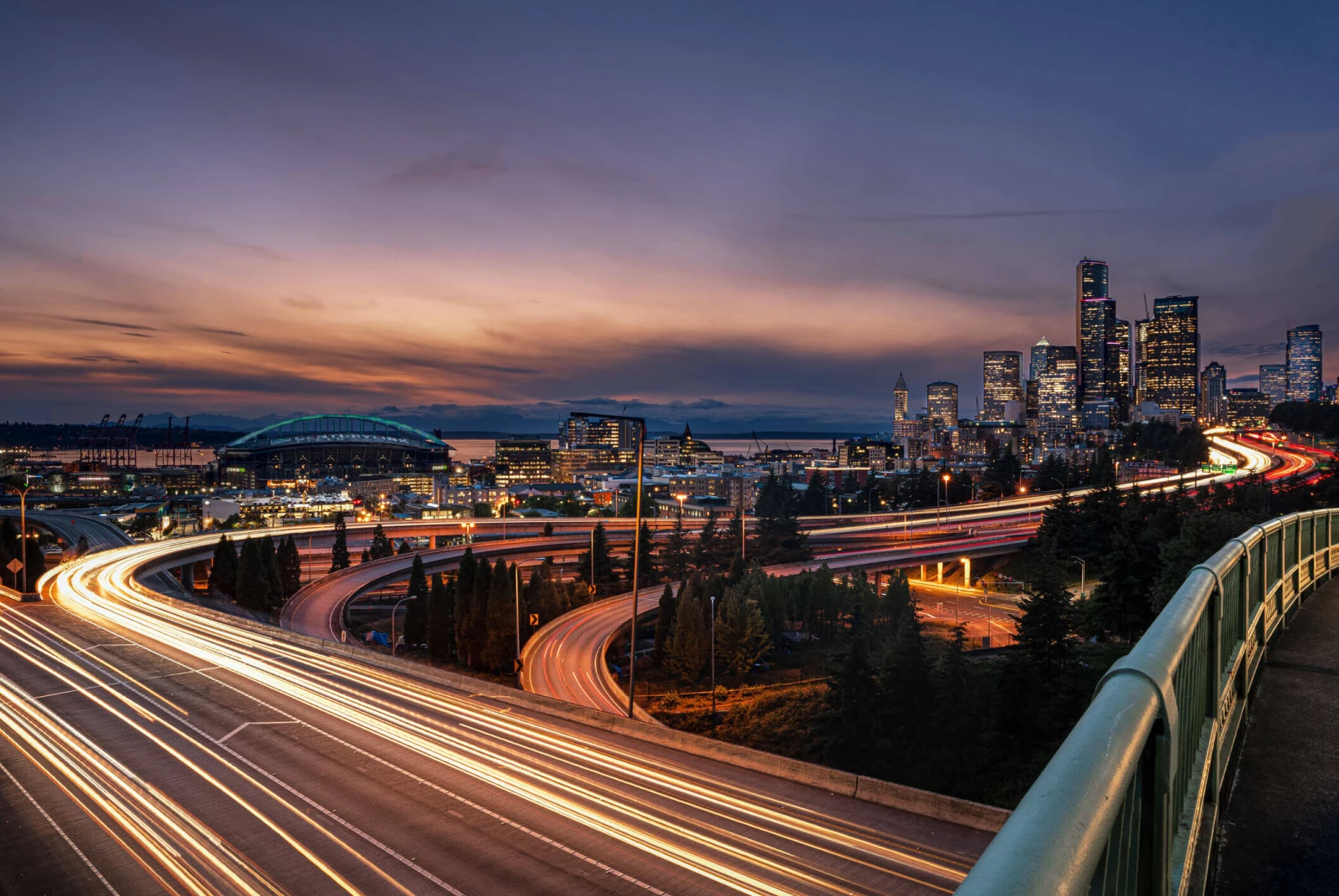Drowsy Driving
Published 4.4.2023
Drowsy Driver Awareness Day is observed on April 6th to shed light on the disastrous effects of drowsy driving. There's plenty of information and awareness regarding the impact of drunk driving, backed by scientific studies and statutory laws; lest we forget that there's another equally heinous and often dismissed impaired driving that is a leading cause of road accidents - sleep deprivation. Sleep deprivation can seriously impair your cognitive skills. In fact, studies show that being awake for 24 hours or more is equivalent to having a blood alcohol concentration of .08%, which is considered to be legally drunk.
Many of us today are busier than our parents or grandparents generations. Between long hours at work, with kids, performing housework, going to school, playing sports, and other commitments, there is more fatigue amongst drivers now than arguably ever before. Due to our fast-paced lifestyles, drowsy driving is a major concern on our roadways. According to The National Highway Transportation Safety Administration, there is an estimated total of 37,000 injury crashes and 45,000 property damage-only crashes that occur annually relating to drowsy driving!
The 3 main causes for Drowsy Driving
- Lack of sleep - given our busy lifestyles, it becomes a challenge to get the appropriate amount of sleep our bodies need for daily recovery.
- Medical Conditions - certain conditions pertaining to our health can bring the onset of drowsiness even when the appropriate amount of sleep has been reached. A common example is someone experiencing issues with their thyroid.
- Drugs & Alcohol - these substances on their own can and have caused driving hazards. When they're paired with lack of sleep and medical conditions, it can become an extremely dangerous situation.
Remember This!
Get plenty of sleep - experts recommend at least 7 hours, daily.
Consult with your doctor for unusual or excessive fatigue - this could be a symptom of underlying health issues.
Never drink & drive - use caution when driving under the influence of prescribed medications.
Pull over when drowsiness is settling in - a 10 minute nap can make the difference in whether or not you make it to your destination.
Distracted Driving
Published 4.11.2023
April is National Distracted Driving Month, and although we are well aware of the dangers of driving while distracted, let's take the time to recommit to safe driving habits. According to the National Highway Traffic Safety Administration, distracted driving is responsible for claiming an average of 3,100 lives every year with over 420,000 injuries. This number includes drivers, passengers, pedestrians, and bicyclists.
Text messaging is an integral part of how we communicate today, so it's no surprise that texting & driving continues to be the largest problem within distracted driving incidents. Americans send roughly 300,000 texts every second resulting in an approximate total of 26 billion text messages every day.
Sending or reading a text takes a driver's eyes off the road for an average of 4 seconds. At 55 miles per hour, that's akin to driving the length of an entire football field blindfolded. Now, considering how most motorists travel faster than that on our highways and roads, imagine how many football fields those 4 seconds could end up being.
Anything that takes your attention away from driving can be a distraction. Sending a text, talking on the phone, using a navigation system, and eating while driving are a few common examples of distracted driving that can endanger the driver and others. Make a commitment to yourself, your family, and Hudson Bay not to drive distracted - make the decision to silence your phone, block calls, keep your eyes on the road, and be a good role model for your family and friends while driving.
Remember This!
Take control of your cell phone, don't let your cell phone control you.
Aggressive Driving & Road Rage
Published 4.18.2023
Unsafe speeds, improper turning, failure to yield, and disobeying traffic signals are the most frequent causes of motor vehicle accidents. Aggressive driving can be caused by longer commutes, traffic congestion, and the behaviors of other drivers can influence how you react to stressors on and off the road. Aggressive driving is triggered by anger, yours and another driver. Aggressive drivers are more likely to speed, make unsafe lane changes, ignore the right of way of pedestrians, and violate traffic signals.
Behaviors of aggressive driving include:
- Tailgating
- Unsafe passing
- Aggressive honking
- Making rude gestures
- Swearing at other drivers
Let's not confuse aggressive driving with road rage - these behaviors are not illegal, but they can escalate and lead to road rage. Road rage is a criminal act where a driver tries to intentionally harm another driver, passenger, or pedestrian.
Help prevent aggressive driving & road rage by adjusting your perspective and attitudes towards driving. Forget the idea of "winning" on the road - driving is not a race that determines who gets the destination first. Leave plenty of room for a trip so that if traffic delays occur, you can keep your cool. Think of the highway as a conveyor belt - everyone will get to their destination eventually, so there is no need to speed or act impolite to save a few minutes.
Let's put ourselves in the other driver's shoes - how many mistakes have you made on the road? How many times have you been lost or uncertain of your turning point? Instead of being upset or angry at another driver, give them the benefit of the doubt. When you make mistakes, acknowledge them and give the drivers around you a friendly nod or wave. Polite behavior makes driving safer.
If you encounter angry or aggressive drivers on the road, don't engage with or provoke them. Avoid eye contact and do not make or return rude gestures or comments. Give an angry drivers plenty of space, slow down or exit the roadway if necessary. Do not pull to the side of the road in hopes to "reason" with the angry driver.
Remember This!
Seek help if you find it difficult to manage your anger on and off the road. Keep your cool on the road and live to work & play another day.
Vehicle Accident Procedures
Published 4.25.2023
For every 1,000 miles driven, the odds of being involved in a motor vehicle accident are 1 in 366. Motor vehicle accidents are unfortunate events that no one wants to be involved in, yet they happen at an alarming rate.
The best way to prevent MVA's is to drive defensively - meaning, avoid distractions, remain alert, keep a safe following distance, adhere to the posted speed limit, and anticipate another driver's actions. Although you can do everything right, there is still a chance you may find yourself involved in an accident at some point in your life. Therefore, it's important to know what you should and shouldn't do following an accident.
Post-Accident Reminders
- If the accident occurs at a busy location such as a freeway or intersection, and you are physically able to do so, move your vehicle to a safe location to avoid secondary accidents. Remember "if it steers, it clears."
- Place your vehicle in park, and take a moment to regulate your nervous system as best as you can. Be aware of your surroundings and make sure no hazardous conditions exist prior to you exiting your vehicle, such as road traffic, leaking combustibles, or downed power lines.
- Utilize road flares or traffic triangles, if you have them, to alert oncoming traffic.
- Check on others involved - be sure that other vehicle occupants and pedestrians in the area are not severely injured. Dial 911 immediately if someone is injured and request an ambulance.
- Call the police to the scene if there is significant damage to the vehicles involved, persons injured, or if there are damages to others property.
- DO NOT ADMIT FAULT and AVOID APOLOGIZING to others at the accident scene. Allow the police to objectively judge the events that took place and determine fault.
- Document the entire scene (pictures, videos, notes with timestamps, etc.) including:
- Driver & passenger ID cards
- Insurance cards of all parties involved
- Makes, models, and license plate numbers of all vehicles involved
- Road signs and traffic lights, if applicable
- Road conditions and visibility





